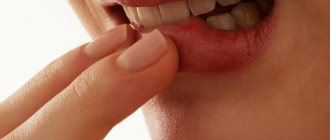This article can not only be read, but also listened to. If it's more convenient for you, turn on the podcast.
Being a control freak can be useful sometimes. It’s better to make sure five times that you definitely put airline tickets and passports in your bag than to later discover at the airport that the necessary documents are missing.
But for some, the desire to control and double-check becomes obsessive. And so much so that it seriously ruins life. A person literally becomes fixated on certain things. For example, he cannot leave the house until he makes sure that the iron is turned off 20 times. Or he won’t wash his hands 10 times. Or, let’s say, it won’t make the hallway shine.
This behavior is called obsessive-compulsive disorder (OCD). In this disorder, a person is regularly visited by intrusive disturbing thoughts (obsessions), from which he tries to get rid of them with the help of equally obsessive actions-rituals (compulsions).
According to Obsessive-Compulsive Disorder of the American National Institute of Mental Health, OCD affects 1-2 people out of every 100. In the United States alone, the problem affects over two million citizens.
Recognizing the line where healthy prudence or love of cleanliness begins to turn into a mental disorder is quite difficult. But it’s still possible - if you don’t miss some characteristic symptoms.
Obsessive-compulsive disorder
Obsessive-compulsive disorder, or OCD, is a mental disorder in which a person is constantly plagued by anxious or obsessive thoughts and repetitive behaviors. However, it is often not so much the OCD person himself who suffers, but those around him.
It may seem that there is nothing special about the behavior that is repeated occasionally - just think, a person with special needs. Who are we without cockroaches in our heads? There are no such people, right? But it's not that simple. Cockroaches are cockroaches, and living with OCD can literally turn into hell on earth. First of all, of course, for the person with obsessive-compulsive disorder. And how hard it is for the loved ones of those with OCD... Only those who have experienced it themselves can understand this. To get an idea of what it is, just imagine how a relative or spouse washes their hands 100 times, takes a shower 4 times a day for exactly 46 minutes, or moves the same objects every day. And these are not the most advanced options; it can be much more serious.
About 2% of people literally suffer from OCD, and in half of the cases symptoms appear in childhood or adolescence, and the so-called “debut”, or the appearance of the first manifestations of the disease after 40 years, is very rare.
Actually, what is OCD and why do its owners have a hard life?
Living with obsessive-compulsive disorder means:
- persistent thoughts, images, or impulses that you cannot control;
- irritation from one’s own behavior and annoying thoughts;
- discomfort due to persistent fear, aversion, doubt, or the belief that things must be done a certain way. Only this way and no other way!
- a lot of time is spent focusing on these obsessions and trying to resist them, which interferes with personal and social life, and, of course, work.
Fortunately, this is treatable. No, it is not cured completely and forever - therapy must be constant and continuous, otherwise you will have to start all over again. If a person with mild OCD does not receive treatment, the symptoms may temporarily disappear on their own, but in cases of moderate or severe situations, there will be no improvement on their own, only worsening is possible.
How to understand when it's time to see a doctor
Contact a specialist if:
- You are often visited by unpleasant, disturbing thoughts that cannot be gotten rid of by willpower.
- Thinking about such thoughts takes up a lot of time and seriously interferes with your performance, communication and relaxation. Ordinary life fades into the background.
- Often thoughts seem ridiculous or dangerous to you, and it’s awkward to tell your loved ones about them.
- You are forced to perform strange, repetitive actions in order to at least temporarily feel relief from painful experiences.
It's not OCD if:
- You've been humming the same song for half a day. This phenomenon is called "earworm". The principle of free association often works: we are looking for a lost thing, and Zemfira’s “I was looking” pops up in our brain.
- Believe in omens or follow religious rules. The simplest rituals, associated with belief in something supernatural and incomprehensible, help get rid of anxiety and nervous tension. This is especially true for suspicious people. He spat over his shoulder three times - and you can cross the road after the black cat, and your soul will be at peace.
- You put everything on shelves, because you like order in everything. If you don’t spend days on end doing this activity, then you were simply raised to be neat. Or a perfectionist.
- Some event has greatly hurt and upset you, and you have been thinking about it for several days. It is normal for a person to experience a stressful situation for some time. Gradually, the severity of sensations decreases and life returns to its previous course.
Types of obsessive-compulsive disorder
Yes, OCD has several types, or variants of manifestation - each patient has his own “point”.
Fear of missing out
A person with obsessive-compulsive disorder may feel a constant need to check things because something might happen. For example:
- checking faucets, alarms, door locks, home lighting and appliances to prevent leaks, damage or fire;
- checking the body for signs of illness;
- confirmation of the authenticity of memories;
- repeatedly checking communication means, for example, the same email or instant messenger - for fear of making a mistake or offending the recipient.
Fear of infection
Some people with obsessive-compulsive disorder simply feel an overwhelming need to wash their face or fear getting infected from people or objects they touch.
This may lead to:
- to put it mildly, excessive brushing of teeth, or washing of hands or the whole body. And this is no joke, hands can be washed more than 200 times a day, and some even spend several hours in the shower - every day!
- repeated cleaning of the bathroom, kitchen and other rooms - up to the purchase of diagnostic tools that count the number of bacteria on the surface, and attempts to reduce absolutely all micro-inhabitants to zero;
- avoiding crowds for fear of contracting germs - and we are not talking at all about the coronavirus and today’s realities, in which, of course, you can’t go anywhere without a mask. Even in pre-COVID times, the poor souls shied away from people and tried to stay away from everyone. And they will continue, of course.
Passion for hoarding
A person with a passion for hoarding cannot bring himself to throw away even used, absolutely useless property. Yes, he understands that in front of him is garbage. But what if it comes in handy?
Fear of realizing obsessive thoughts
People with obsessive-compulsive disorder understand that they cannot prevent or stop recurring, annoying, and annoying thoughts, including thoughts about violence, suicide, or harming others or loved ones. To imagine what it's like to live with this, just imagine that you constantly have thoughts that you are a cannibal or a pedophile. Or maybe you need to jump off a bridge. Preferably right now. Naturally, you have no evidence of cannibalism or the need to fly from bridges, but you have constant thoughts about it. This is seriously unnerving, but the likelihood that a person will follow such obsessive thoughts is quite low.
Passion for symmetry and orderliness
Yes, perfectionists who arrange all objects in a strict sequence are the same as OCD sufferers.
People with this type of disorder constantly feel the need to put things in a certain order. In fact, for them it is simply a physical need to do this and not otherwise in order to avoid discomfort or, in their opinion, harm. This may result in rearranging books on a shelf, sorting towels by color, or trying to arrange things on the table in a strictly defined order. As soon as the correct order is violated, the person becomes VERY uncomfortable.
“It won’t go away on its own”
Then I had no choice, but today I would turn to a psychotherapist in a specialized center and under no circumstances would I delay it. It won’t resolve on its own—it’s biochemistry. When the connection between the brain and the autonomic system is disrupted, this entails real, not illusory, diseases of the internal organs, stress and depression. Further - more, up to a complete loss of interest in life and suicidal thoughts. In my case, lack of treatment led to mental mutism. I was lucky, I didn’t spend long in this state, but it can last for decades. It’s just a “coma” - conscious, with open eyes. This is scary. Under no circumstances should you delay. Now there are many good specialists - they will definitely help.
I finally found a doctor I could trust and began treatment. Modern antidepressants and supportive therapy significantly improve quality of life. My drug does not reduce libido, does not exclude alcohol intake and does not have severe side effects. If 10 years ago it was possible to refer to the lack of information and reliable help, today there is no longer any reason to live in hell. We treat the heart, reproductive system, correct posture, vision - and the brain is no worse.
Symptoms and signs of obsessive-compulsive disorder in adults
OCD includes a whole “bouquet” of variants of ideas constantly spinning in the head, and so-called compulsions - obsessive behavior, rituals or thoughts, that is, actions that a person, in his opinion, simply needs to perform.
From the outside it may seem that this is not so scary, but in fact it is unnerving and prevents you from performing completely normal actions. Obsessions
What may be just a cause for concern for ordinary people becomes even more than just a “fad” for an OCD person. As a rule, we are talking about the following questions:
- Contamination by body fluids, germs, dirt and other substances.
- Loss of control, such as fear of acting out of fear of harming oneself or others.
- Perfectionism, which may include a fear of losing something or an overemphasis on accuracy or memorization. — Harm, including fear of responsibility for a catastrophic event.
- Unwanted thoughts on the topic of sex and its unacceptable options.
- Religious or superstitious beliefs, such as fear of offending God or stepping on cracks in the sidewalk.
Compulsions
Not all repetitive behavior is a compulsion. Most completely normal people devote a considerable part of their lives to it - for example, they organize their evening time in a certain way, or plan a Sunday evening. But there is a big difference between “I want to do this” and “I have to do this because otherwise something bad will happen,” and we are not talking about an unironed shirt before work. For a person with obsessive-compulsive disorder, the need to perform repetitive actions is very high, it occurs constantly and takes a long, long time.
Evgenia Yakovleva,
Rehabilitation doctor, physiotherapist, Medicine 24/7 clinic Examples of compulsions can be:
- laundry and cleaning, including crazy amounts of hand washing per day;
- Constantly monitoring yourself for any symptoms of disease;
- repetitive actions such as getting up from a chair. Just imagine that you can't start working without getting up and down in your chair exactly 68 times. And that is not all. Every time you need to move away from the place, before continuing the activity, you need to... yes, do 68 climbs again;
- Constantly replaying past or future events in your head.
“I thought others didn’t notice my rituals”
By the age of 19, I had already had two exacerbations, but I still had no idea what was happening to me, and did not even imagine that this could be a deviation. One day I was sitting at home, watching TV with my mother. MTV started a program about a woman with a mental illness, they often showed something similar about obesity, anorexia and other “exotics” that over time became so well known to us. This woman could not touch door handles; she walked on the floor with disposable towels soaked in antiseptic tied to her feet. She was afraid of germs. (This, by the way, is a classic OCD - fear of germs as a source of threat. My fear of genetic diseases and fatal diseases is a relatively rare case.) She washed her hands endlessly, and if she accidentally touched the faucet or sink, she started over. Her little child, who had barely learned to walk, repeated everything after her and “played” washing his hands. She cried and said that she had ruined her son's life.
At first I didn’t pay attention to this transmission, it was just something going on in the background. And my mother looked and suddenly told me sternly: “Look what your life will be like if you don’t pull yourself together.” It was strange - I thought my mother and other people didn’t notice my rituals.
Alice, Munchausen, Peter Pan. What unusual syndromes do people exhibit? More details
Obsessive-compulsive disorders in children
The first signs of obsessive-compulsive disorder often appear during adolescence, but sometimes they appear in childhood. Typically, teenagers experience symptoms such as:
- low self-esteem;
- disrupted daily routine and disrupted rhythm of sleep and wakefulness;
- difficulty completing school assignments;
- physical illnesses caused by stress;
- problems making contact or maintaining friendships or even friendships.
Childhood obsessive-compulsive disorder is more common in boys than in girls, but by adulthood, people with OCD of both sexes become approximately the same.
Causes of obsessive-compulsive disorder
Scientists are still not clear on the exact causes of this strange disorder, but they have several theories. Most tend to believe that genetic, neurological, behavioral, cognitive and environmental factors may play a role in the development of OCD.
Let's talk about this in more detail.
Genetics
It appears that obsessive-compulsive disorder does occur more frequently within the same family, suggesting a possible genetic cause. Brain imaging studies have shown that the main organ of OCD sufferers works differently from normal people: for example, it does not respond correctly to substances involved in the transmission of signals from neuron to neuron, or from nerve to nerve - dopamine and serotonin.
Autoimmune
causes
Sometimes signs of OCD appear in children after an infection, for example:
- streptococcal infections, including sore throat;
- Lyme disease, or tick-borne borreliosis, transmitted by ticks;
- H1N1 influenza virus (swine flu).
Doctors call the sudden onset of obsessive-compulsive disorder symptoms in children pediatric acute neuropsychiatric syndrome, or PANS.
Often such manifestations arise unexpectedly, and become maximally pronounced within 24-72 hours, and then disappear, and later return again. Behavioral reasons
One theory suggests that a person with obsessive-compulsive disorder learns to avoid fear associated with certain situations or objects and performs rituals that seem logical to him alone to reduce the perceived risk.
Fear may first arise at a time of severe stress - trauma or significant loss, for example, of a loved one. As soon as a person associates any object or circumstance with this feeling of fear, he immediately begins to avoid it - approximately in the way that obsessive-compulsive disorder is most often expressed in adults. For example, walking only on odd-numbered steps, or only on paving slabs without cracks, or exactly one at a time.
This is often how obsessive-compulsive disorder first appears in people with a genetic predisposition to the disorder.
Cognitive (mental) reasons
Another theory suggests that OCD begins in situations where a person simply misinterprets their thoughts. Unwanted or intrusive thoughts periodically arise in any person - this is normal. For example, the relatively normal author of this article wants a new car right now. REALLY wants it. But this does not prevent him from continuing to write text, without being distracted by thoughts of a fully equipped Mitsubishi Pajero. Well, or almost doesn’t interfere.
It’s more complicated with OCD sufferers – their obsessive thoughts interfere with literally everything, all their normal daily activities. And let's take another example - a person caring for a baby and worried that he might accidentally harm the child. Everything, literally all the poor fellow’s thoughts revolve around what could happen to this child. And this lasts the entire time the baby is nearby, without interruption. As a rule, a person manages to ignore these thoughts, that is, not to hold the child in his arms 24 hours a day, but if this does not help and the obsessions do not go away, then they are not far from transforming them into something new. In addition, when the OCD person becomes convinced that his idea can actually come true, he responds by taking paranoidly excessive actions to prevent this - getting rid of the gas stove, due to which a gas leak may occur, or stopping driving a certain type of transport, after moving on which something bad is sure to happen.
Incidents
Stressful events often trigger OCD in people prone to it. Often, signs of obsessive-compulsive disorder appear within six months after events such as:
- childbirth;
- complications during pregnancy or childbirth;
- serious conflict;
- serious illness;
- traumatic brain injury.
Symptoms of obsessive-compulsive neurosis
Symptoms of obsessive-compulsive neurosis include limited/severe obsessive or compulsive symptoms occurring within the structure of neurotic/affective personality disorders. The severity of symptoms is largely determined by the patient’s tendency to form neurotic reactions and the level of personal anxiety.
Obsessions
The main causes of obsessive-compulsive neurosis are obsessions (obsessive thoughts) that arise against the will and are perceived by the patient as meaningless/painful images or memories, which he seeks to get rid of because he realizes that they complicate his everyday life. But despite the patient's resistance, these thoughts dominate his psyche. There are many forms of this disorder.
One manifestation is what is called “mental chewing,” which involves obsessive thinking that manifests itself as an influx of repetitive memories; arrhythmomania (obsessive counting) - meaningless addition of numbers in the mind, re-reading windows, cars; doubts about the completion/incorrectness of the actions performed (closing windows/doors, turning off electrical appliances); unpleasant expectations of failure when performing habitual actions.
Contrasting obsessions are especially unpleasant and painful. Most often, contrasting obsessions are manifested by the appearance in the head of aggressive thoughts about a person and images of immoral content: causing bodily harm to others, murder, suicide, hooligan acts, which are accompanied by feelings of guilt, incessant doubts, fear of loss of control and paralyzing anxiety. For women, these may be unpleasant thoughts about the man who offended her. Contrasting obsessions are accompanied by a conflict between an extremely expressed desire for such actions and moral standards. At the same time, the patient realizes that the need for actions of this kind is unnatural and illegal, however, when trying to suppress such thoughts/desires, their intensity increases.
Compulsions
They are repeatedly repeated obsessive actions, taking the form of rituals of varying complexity, leading to a decrease in the level of tension/anxiety caused by obsessions. For example, stepping over cracks in asphalt; walk along a regular route/on a specific side of the street; putting things in a certain order. At the same time, in some cases the patient seeks to repeat actions a certain number of times in order to reduce anxiety, and if he succeeds, he starts all over again. As in cases with obsessions, the patient realizes that these actions occur of his own free will, despite the fact that they cause psychological discomfort and he tries with all his efforts to avoid them.
Phobias
Another manifestation of the phenomenon of obsession is phobias (obsessive fears) - fear of pollution in public places and the possibility of infection after contact with people/objects; fear of being in a confined/close space, in a crowd, fear of communicating with pets, etc. Such patients tend to avoid frightening places/situations (do not ride the elevator, rarely leave the house, avoid crowds of people).
As a rule, various obsessive states (symptoms) develop gradually, in waves, with periods of long/short-term remissions and exacerbations. Long-term spontaneous remissions for more than a year are observed only in 10-12% of patients. Obsessive-compulsive disorder syndrome gradually progresses in the vast majority and over time leads to a pronounced disruption of the patient’s adaptation to society. Emotional disorders (feelings of insecurity/inferiority, irritability , depression) and character changes—fearfulness, anxiety, timidity, suspiciousness, shyness—are quite often observed. In some cases, the disease is complicated by anxiety and depressive symptoms (depression, solitude, avoidance of society, gloominess, etc.).
Diagnosis of obsessive-compulsive disorder
When diagnosing OCD, doctors look for specific criteria that help identify this condition:
- the presence of compulsions - obsessive ideas or behavior;
- obsessive states that take a lot of time, cause serious stress or deterioration in social or professional areas of life;
- OCD symptoms that do not result from substance use or medication use;
- manifestations of obsessive-compulsive disorder that are not explained by other health problems.
It is important to distinguish OCD from other disorders that manifest themselves in similar ways in some situations—depression and anxiety.
Prevention
Since the etiology of obsessive states has not been identified, preventive measures are advisory in nature. Primary prevention is aimed at preventing the development of neuroses of this type, through proper child upbringing, teaching adolescents methods to increase stress resistance, and general strengthening of the body.
Secondary prevention is aimed at preventing relapses, which is achieved through periodic medical correction of the patient’s mental state, psychotherapeutic sessions, following the recommendations of the attending physician, avoiding the abuse of psychoactive drugs/alcohol, and introducing into the diet foods containing tryptophan , which is a precursor of serotonin . It is necessary to carefully monitor the appearance of the first mild signs of the disease. Patients with psychopathic character traits should be periodically/continuously prescribed mild antipsychotic drugs ( Thioridazine , Neuleptil ).
Treatment of obsessive-compulsive disorder (OCD)
How to treat obsessive-compulsive disorder? Fortunately, effective treatments for OCD exist. The choice of treatment depends on the symptoms and the extent to which they affect a person's life.
Cognitive behavioral therapy for OCD
Essentially, it is psychotherapy that helps OCD sufferers change their thoughts, feelings, and behaviors. Here, again, there are two options:
- Exposure and Response Prevention (ERP)
:— Impact: allows a person to feel and experience the very situations and encounter objects that cause him fear and anxiety. Over time, the “experimental” gets used to it, and each new encounter with what previously seemed terrible leads to a less and less feeling of anxiety, or even to its disappearance. By the way, this is how phobias are treated: people with cynophobia are allowed to interact with dogs, or arachnophobes are allowed to interact with spiders.
— Answer: it teaches a person to resist compulsive or obsessive behavior.
- Cognitive therapy
begins with encouraging the person to identify and re-evaluate their beliefs and recognize the consequences of their compulsive behavior or to stop doing it. Then the doctor encourages the patient to: - study evidence that supports or refutes the obsession or obsession; - identifying the distortion of this thought invented by his brain; - developing the least dangerous response to intrusive thoughts, images or ideas.
Drugs to treat obsessive-compulsive disorder
A number of medications called selective serotonin reuptake inhibitors (SSRIs) are used to treat obsessive-compulsive disorder, including some types of antidepressants, such as:
- escitalopram
(Lexapro, Lexapro); - fluvoxamine
(Luvox); - paroxetine
(Paxil); - fluoxetine
(Prozac); - sertraline
(Zoloft).
As a rule, for the treatment of OCD, the doctor prescribes them in a higher dosage than for depression, and even so, the person may not notice the results of their work for almost 3 months. About half of all OCD sufferers do not benefit from SSRIs unless they are also taken with antipsychotic medications. Additionally, in 2010, the anti-tuberculosis drug D-cycloserine
(seromycin), especially if you engage in cognitive behavioral therapy in parallel with it.
Forecast
The prognosis, despite the fact that obsessive-compulsive disorder syndrome in most cases occurs in a chronic form and contributes to the formation of a neurotic personality type, is favorable in most cases. Complete recovery of patients is quite rare. Mild forms of the disease with adequate treatment can be stabilized throughout the year. Treatment of severe forms with the presence of numerous obsessions and complex rituals requires a longer time. In such cases, it is important to prevent/minimize cases of relapses accompanied by a slide into dysfunctional, habitual cognitive/behavioral attitudes. In severe cases, the disorder usually has a negative impact on the patient’s ability to work, which can cause disability.







